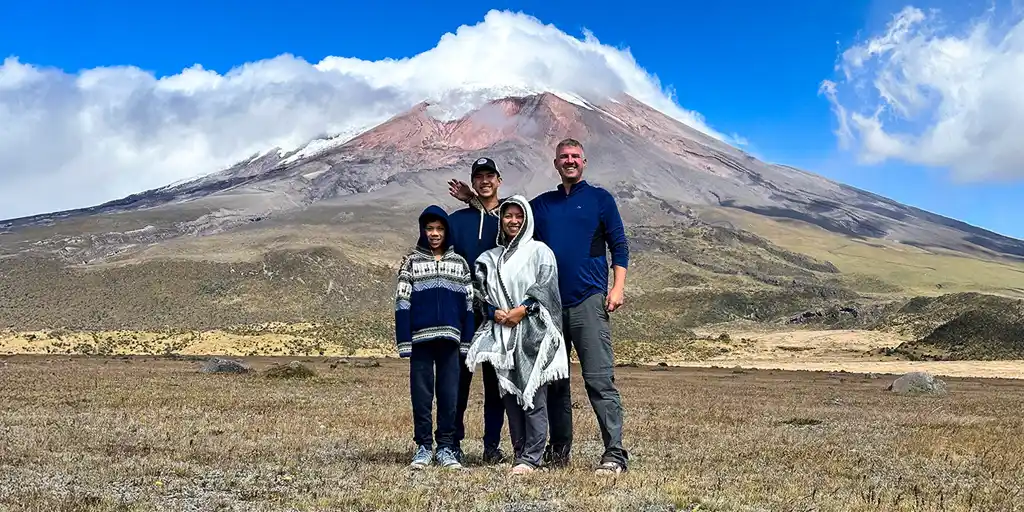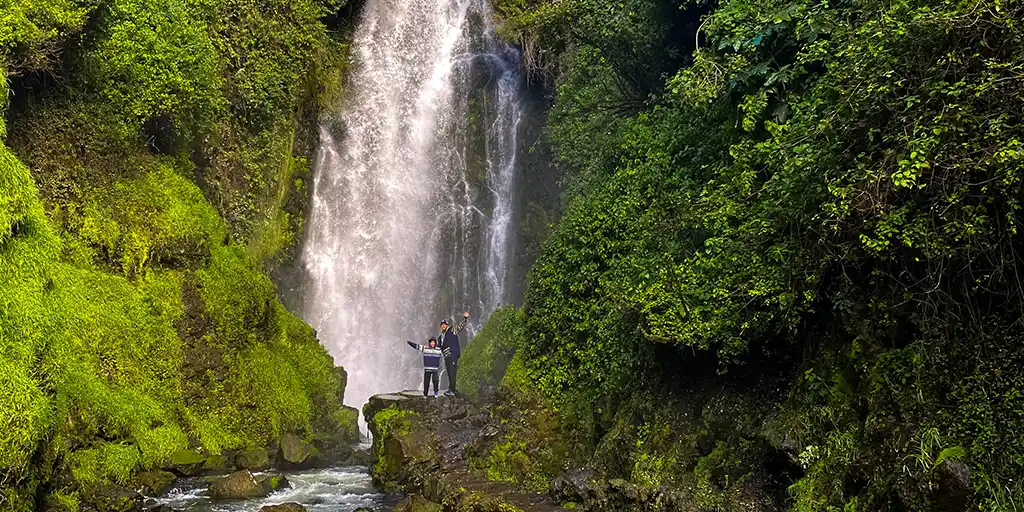Discover what a family cruise through the Galapagos Islands really looks like. A guide to wildlife, snorkeling, and adventure family travel with kids.
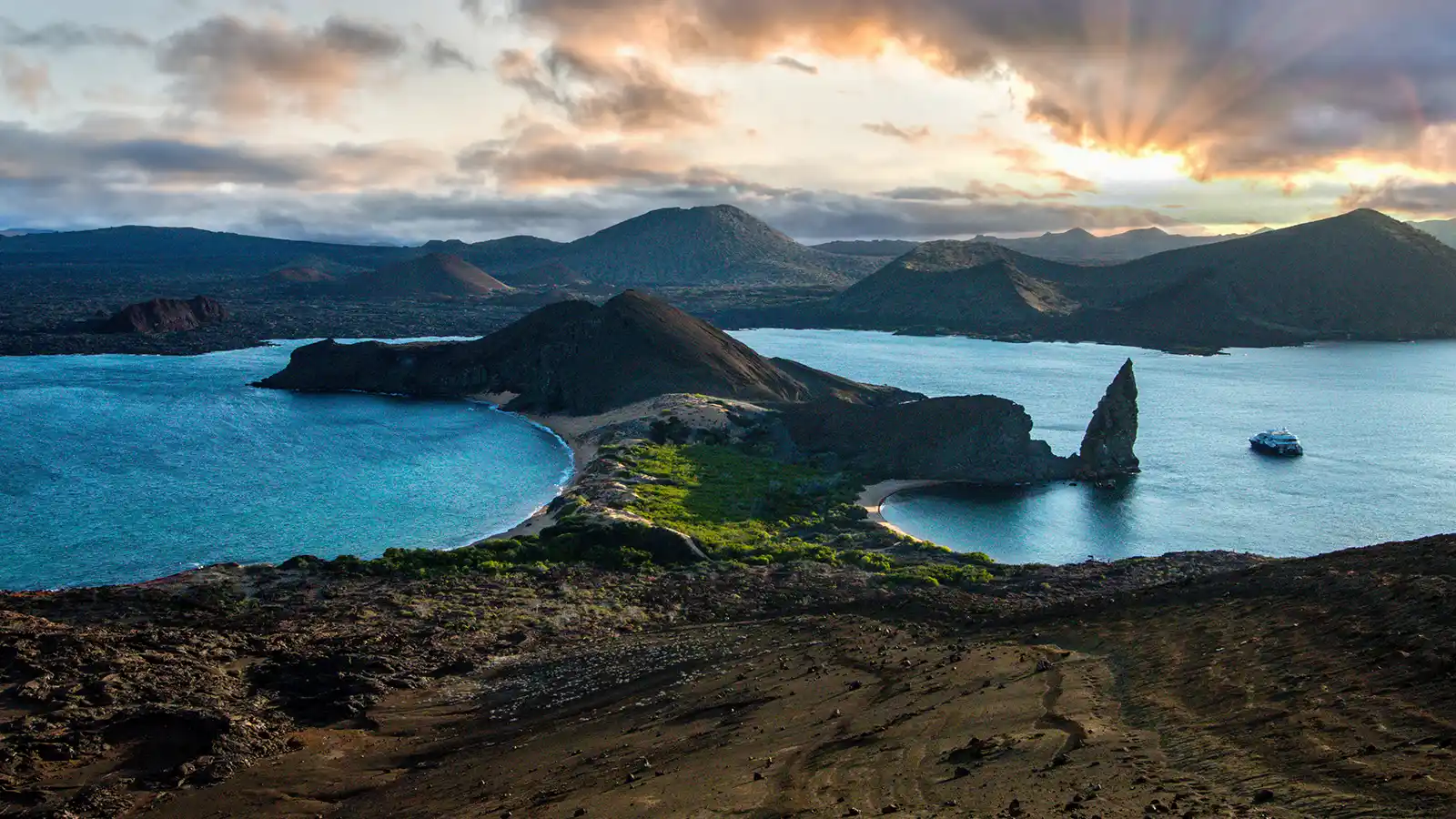
When I was a kid, I would plop down on the living room floor, flipping through old National Geographic magazines. Between the glossy pages and remarkable photos, I lost myself in dreams of far-off worlds: the Sahara Desert, the Amazon, the Arctic. But there was one destination that seemed more myth than reality — the Galapagos Islands.
This volcanic archipelago felt impossibly remote. A place where some of the world’s wildest creatures basked on lava rocks as the waves of the Pacific crashed around them. A place where giant tortoises lumbered in the highlands, and where legendary naturalist Charles Darwin’s theories were born.
Even decades later, after crafting a career chasing stories and landscapes across more than 50 countries, that dream still felt distant. But this year, it finally became a reality. Finally, I was standing on the soft sand of San Cristobal Island, staring out at one of the most unbelievable sunsets I’d ever witnessed. The jagged silhouette of Kicker Rock loomed in the distance. Sea lions rolled lazily across the beach in front of me.
And I was barely able to keep myself from throwing up.
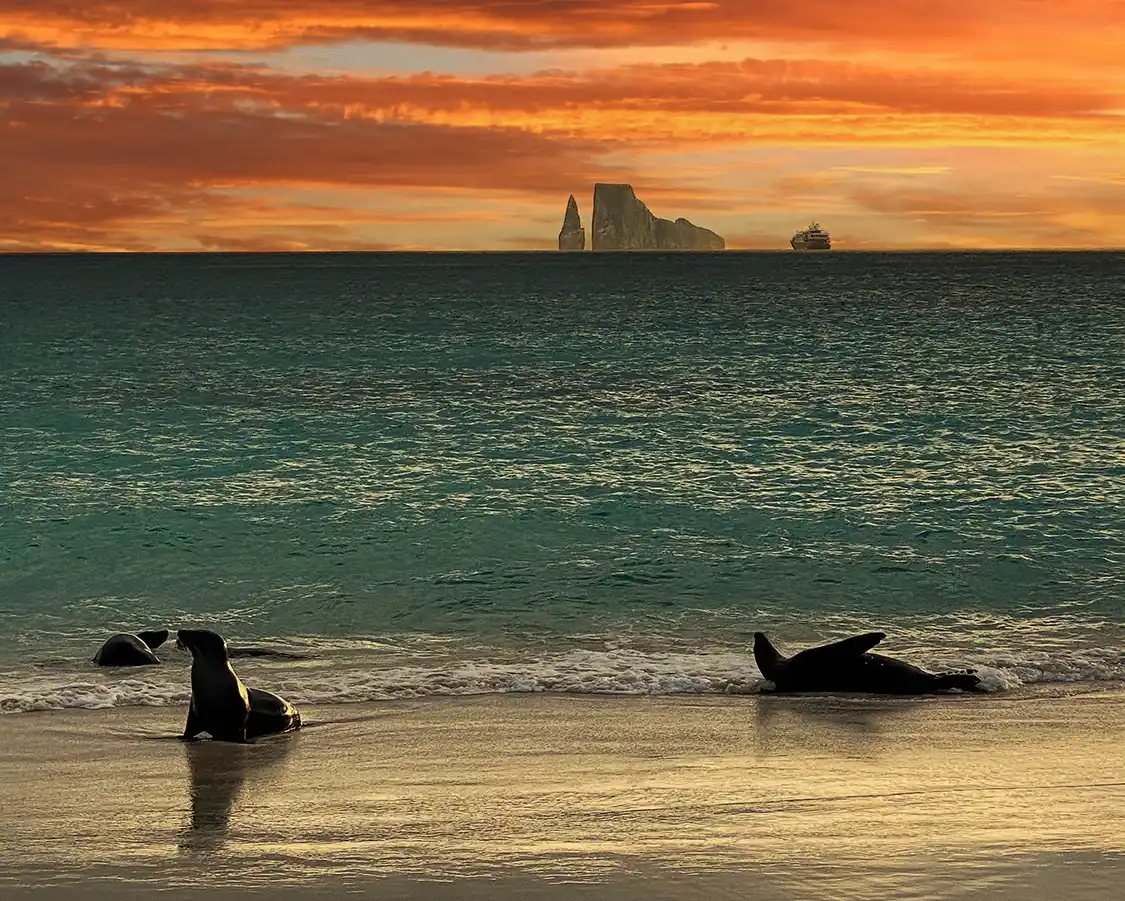
Just 24 hours earlier, I’d been nursing my son Dylan back to health after he caught a stomach bug in Cotopaxi National Park. It lingered with him through our adventures at Quilotoa Crater Lake. And just as we joined my mother-in-law, Maria, in Quito for our multi-generational family cruise through the Galapagos, the bug found me. Hard.
But this was only day one of our eight-day journey through the Western Loop of the Galapagos Islands. I had time to recover. I still had time to experience the adventure I’d been dreaming about since childhood.
Right?
Planning a Galapagos Family Cruise
Here’s the first thing you need to know about planning a family trip to the Galapagos Islands: it’s not as simple as booking a flight, finding a hotel, and wandering out the door to find the nearest ceviche.
This isn’t the Mayan Riviera.
The Galapagos Islands are one of the most remote, tightly regulated, and logistically complex travel destinations on Earth. And that’s a good thing — it’s the only reason this ecological masterpiece hasn’t been trampled into mediocrity.
For families, though, that complexity can feel intimidating. Flights, park fees, cruise operators, itineraries… It’s like trying to solve a Rubik’s Cube while your kids are asking when lunch will be ready. But once you cut through the noise, the formula is simple: pick the right ship, choose the right route, and accept that this won’t be a “resort vacation.”
The Galapagos demands a sacrifice of time and energy. The reward, though, is one of the most awe-inspiring experiences on Earth.
Choosing a Galapagos Cruise vs. Land-Based Travel
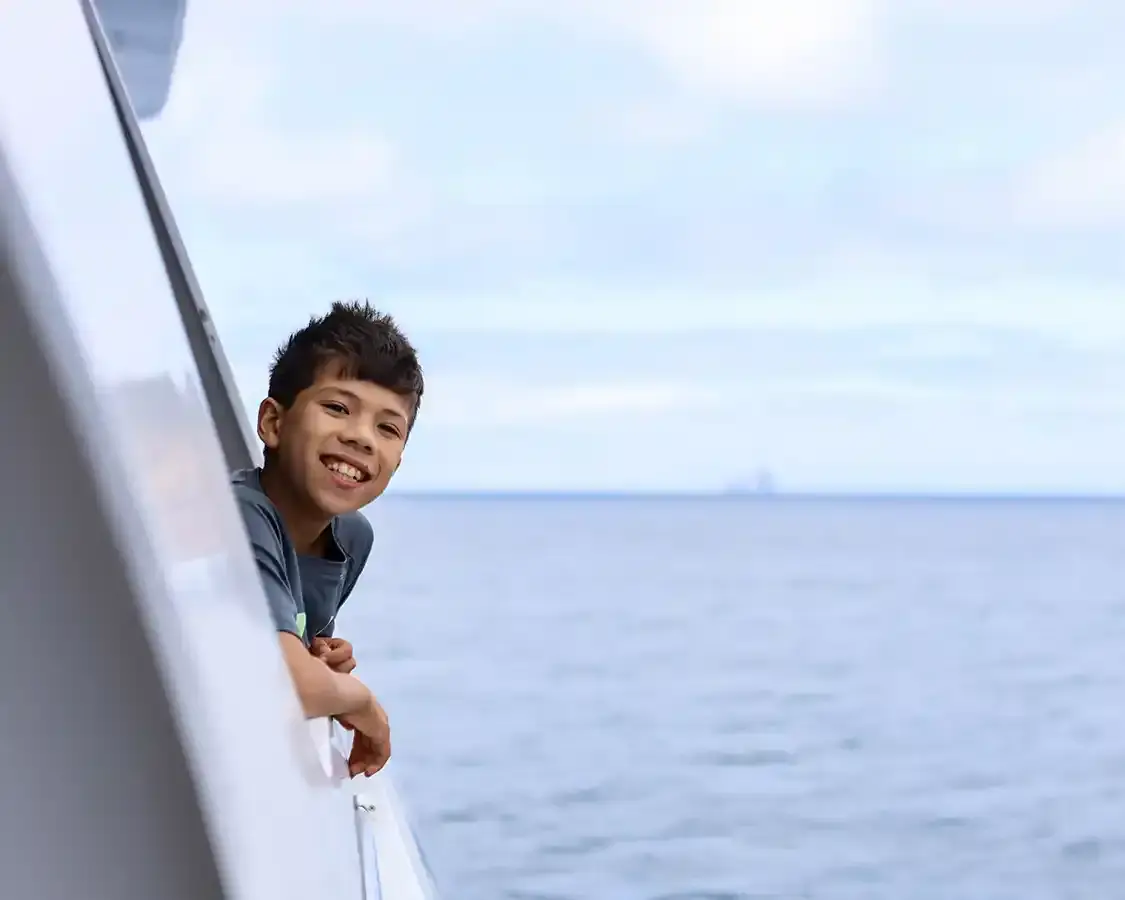
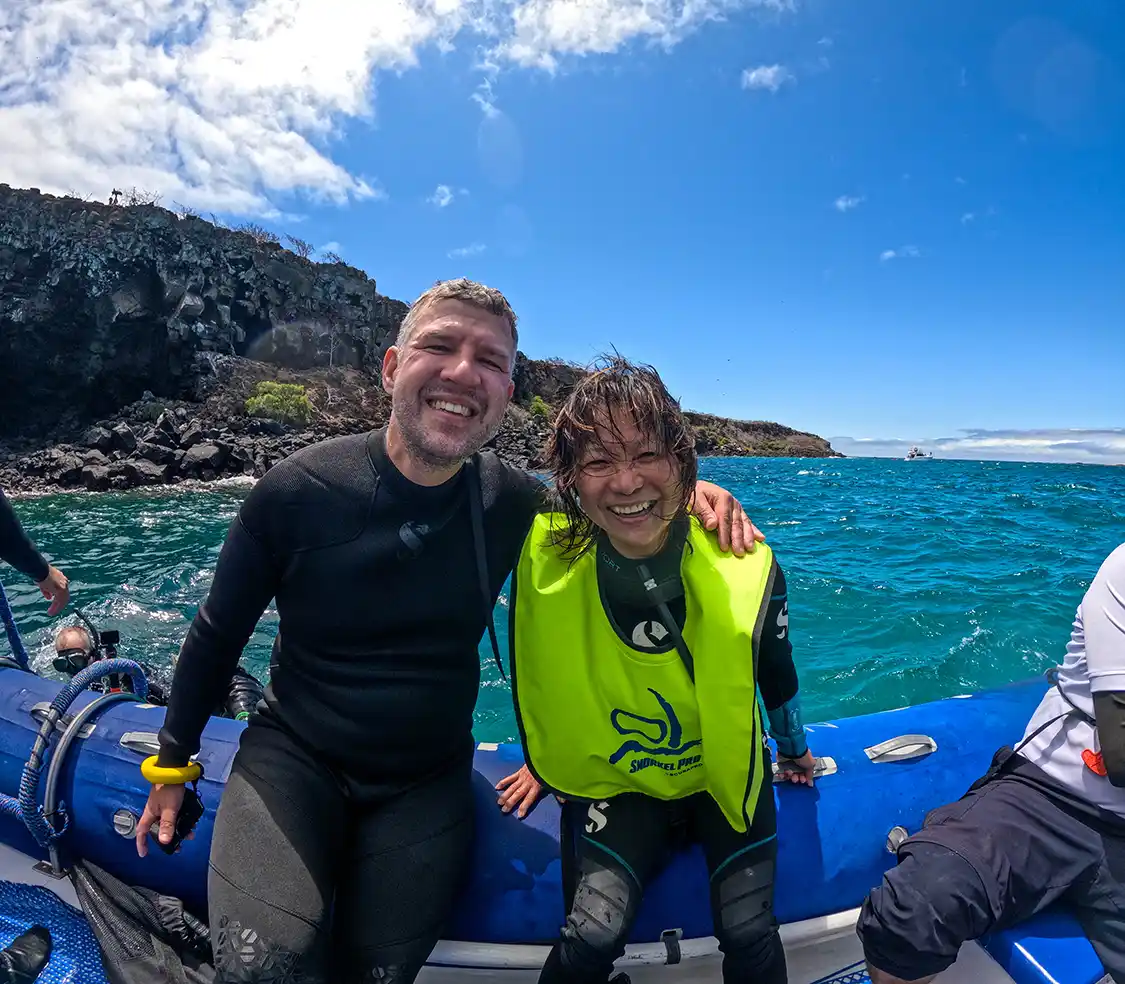
Some travelers choose to base themselves on the main islands of the Galapagos — Santa Cruz or San Cristobal — and take day trips. That works if your kids are very young or if the idea of being on a ship for several days makes you as green as I was on that beach.
But let me be blunt: if you really want to experience the Galapagos Islands, you need to get on a boat.
I mean, you’ll need to anyway if you don’t want to be stuck visiting just one or two of the Galapagos islands. But the truth of the matter is that cruises unlock the remote islands, the raw places where penguins dive-bomb the surf and volcanic cliffs look like they’re still smoking. Day trips from Santa Cruz and San Cristobal simply can’t touch that.
It’s also a matter of time management. Galapagos cruises spend their nights covering the long distances between the various islands. On land-based adventures, you’re going to eat up valuable daylight traveling from Santa Cruz or San Cristobal to one or maybe two of the 19 different islands that make up the Galapagos archipelago.
Because of the tight regulations that protect the islands and their wildlife, you’re only going to have a short amount of time for each excursion before you have to make the return trip to your home base.
Why We Chose Natural Paradise with Royal Galapagos
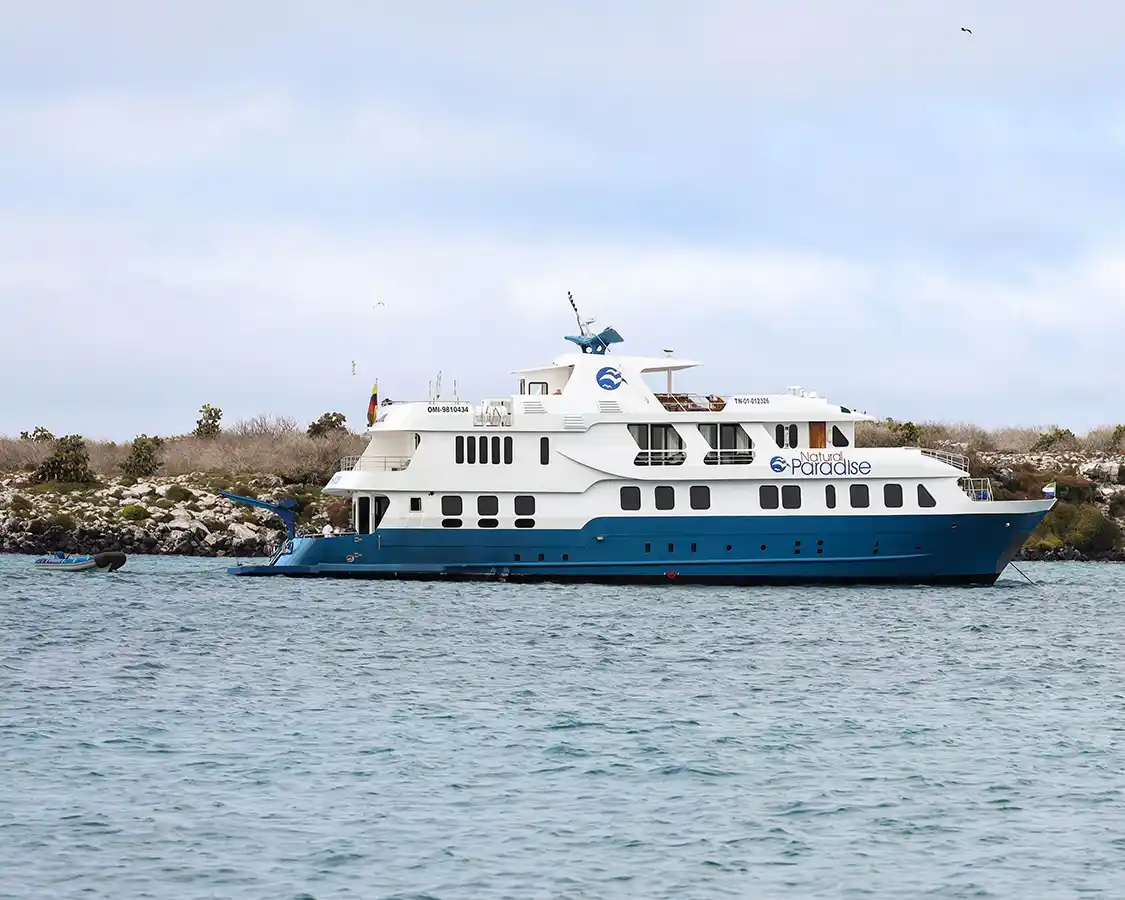
We booked with Royal Galapagos, a company that runs small-ship luxury Galapagos cruises. Our home was the Natural Paradise — a 16-passenger yacht that was just the right size to feel adventurous without giving up hot showers or decent food.
Was it fancy? Sure, the cabins were comfortable, the meals were multi-course, and the upper deck hot tub was quickly taken over by my kids. But the real luxury was time. Smaller ships mean fewer people, which means more hours ashore and more wildlife encounters. Large ships often have to divide their allotted shore time between multiple waves of passengers, since only a certain number of people are allowed on shore at any given time.
And the crew? They weren’t just guides and cooks. They were a part of the adventure. They knew when to push us (“Yes, the water looks cold, but trust me, you want to get in — there are sea lions waiting”) and when to give us space to just soak it all in.
Why the Western Loop?
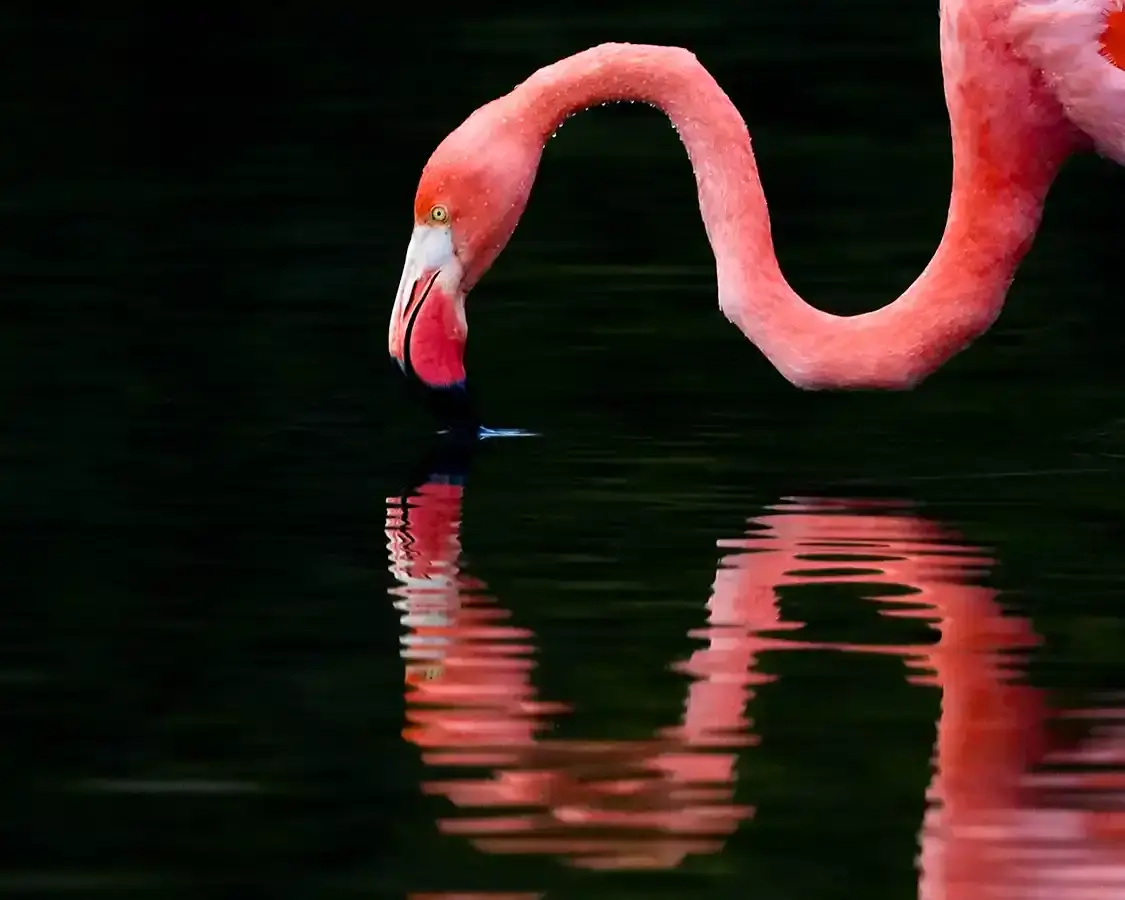
Cruises in the Galapagos Islands follow strict routes set by the park, and each loop has its strengths. We chose the Western Loop because it promised a mix of mind-blowing volcanic landscapes, snorkeling that borders on spiritual, and wildlife so unique, we ran out of ways to say “Did you see that?!”
It wasn’t the cushy option. The seas could be rough, and some landings were wet and messy. But that’s the point of adventure travel. We didn’t come here for comfort. We came for memories.
Traveling with Three Generations
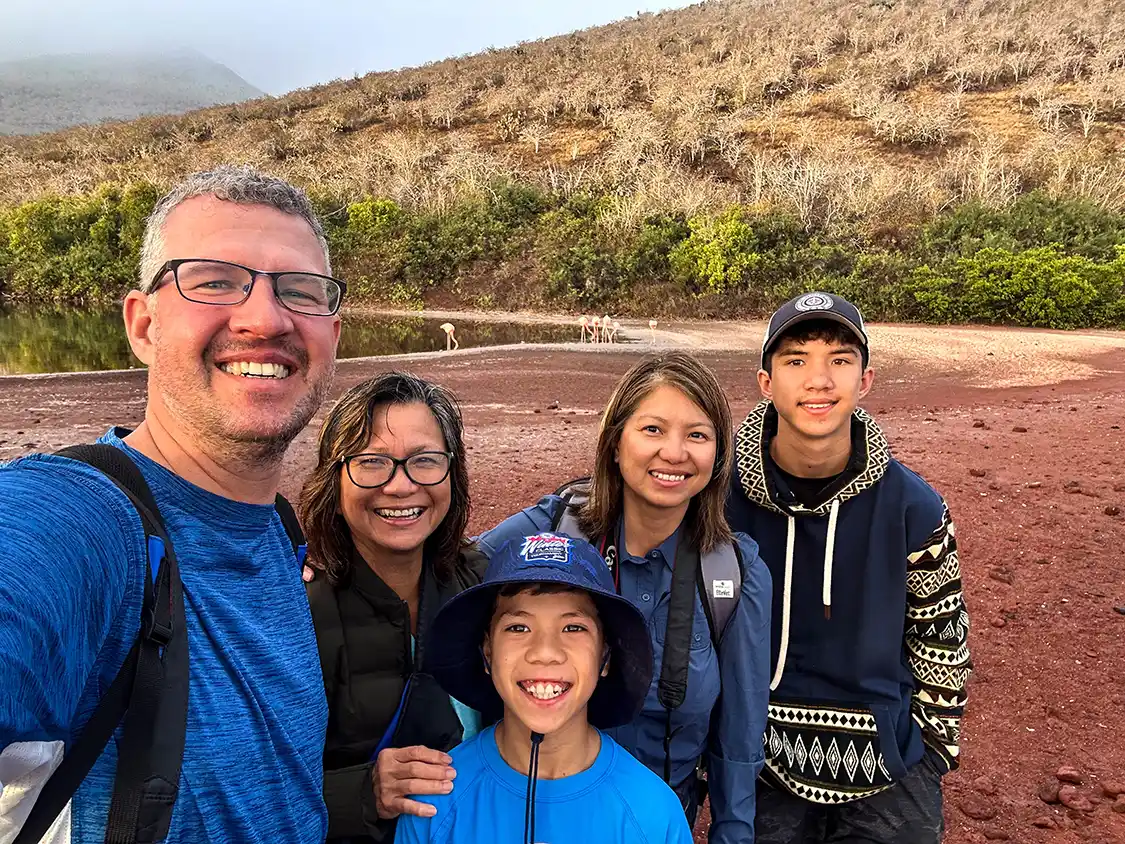
Having Christina’s mom, Maria, join us was more than just a treat. It changed the trip. Watching her eyes bulge when the first fish she saw on her very first snorkeling experience was a 12-foot shark was unforgettable. Seeing them light up at the sight of a giant tortoise, or laugh at sea lions belly-flopping beside our kayaks, made me realize this trip went far beyond ticking off bucket-list experiences.
This trip offered perspective. Our kids saw the islands through young eyes, full of curiosity and energy. Maria saw them with the wisdom of someone who’s lived long enough to know how rare this kind of trip really is. And Christina and I? We were caught in the middle — translating our awe into lessons for our kids, while realizing we were students too.
That’s the power of the Galapagos: it levels the playing field. Age doesn’t matter when you’re standing on fresh lava, laughing at a blue-footed booby that forgot how to fly.
Our Western Loop Galapagos Cruise Itinerary
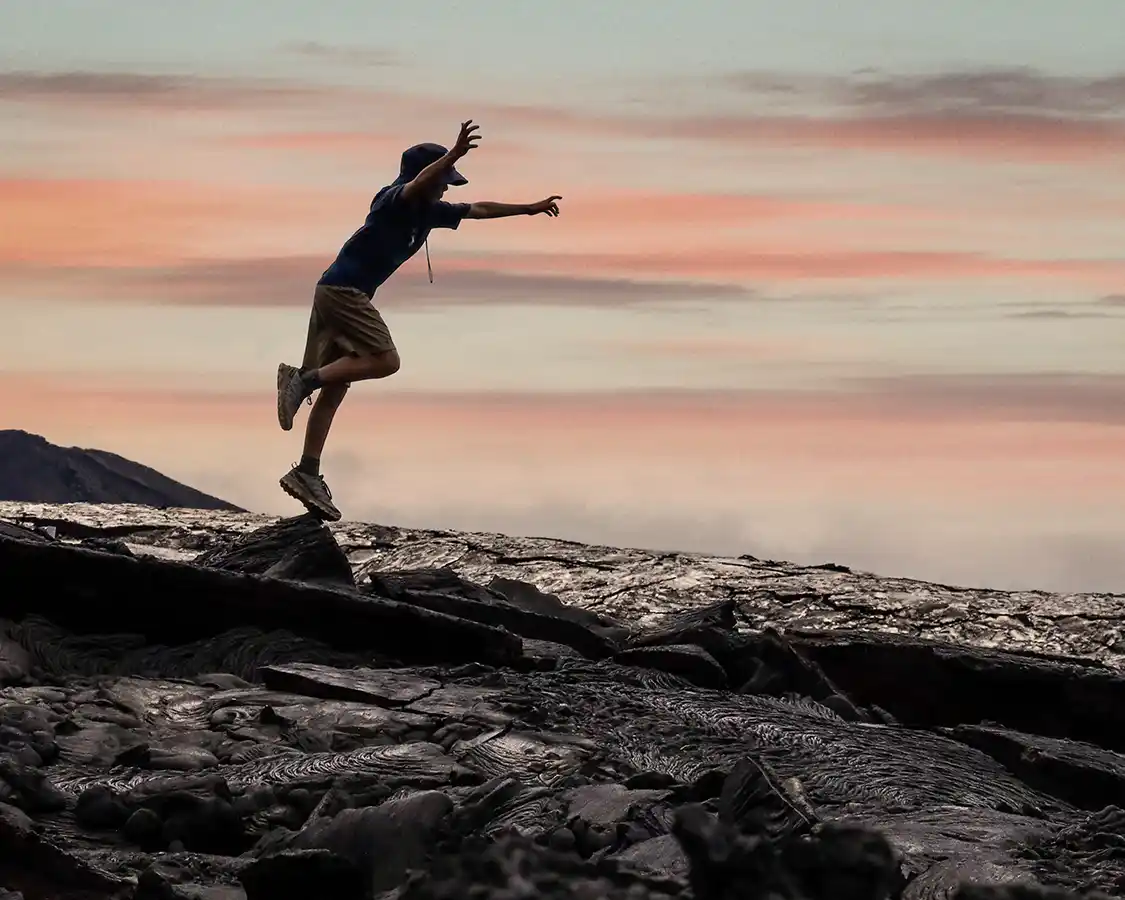
The beauty of a Galapagos family cruise is that every day feels like stepping into a new world. Each island offered up its own unique character, its own palette, its own set of creatures that refuse to exist anywhere else. Our Western Loop itinerary aboard Natural Paradise hit some of the most iconic sites — and some of the most bizarre landscapes I’ve ever seen.
Our Galapagos cruise itinerary was a modified eight-day route through the Western Loop that followed this itinerary:
- Day One: San Cristobal Island – Views of Kicker Rock and Witch Hill
- Day Two: North Seymour Island and South Plaza Island – Dry landings, loads of wildlife, and our first snorkeling experience with sharks
- Day Three: Rabida and Bartholomew Island – Jaw-dropping sunrises, frigate birds, and lots of rays
- Day Four: Santiago and Santa Cruz – Hiking otherworldly lava flows, snorkeling, and flamingos
- Day Five: Santa Cruz – Giant Tortoises, twin craters, lava tubes, and Urban Galapagos
- Day Six: Genovesa Island – Remote character, birds galore, kayaking, and epic snorkeling
- Day Seven: Santiago Island – Hiking, snorkeling, and marine iguanas
- Day Eight: Santa Cruz Island – One final goodbye to the Galapagos Islands
Here’s what stood out:
Wildlife Encounters on Land
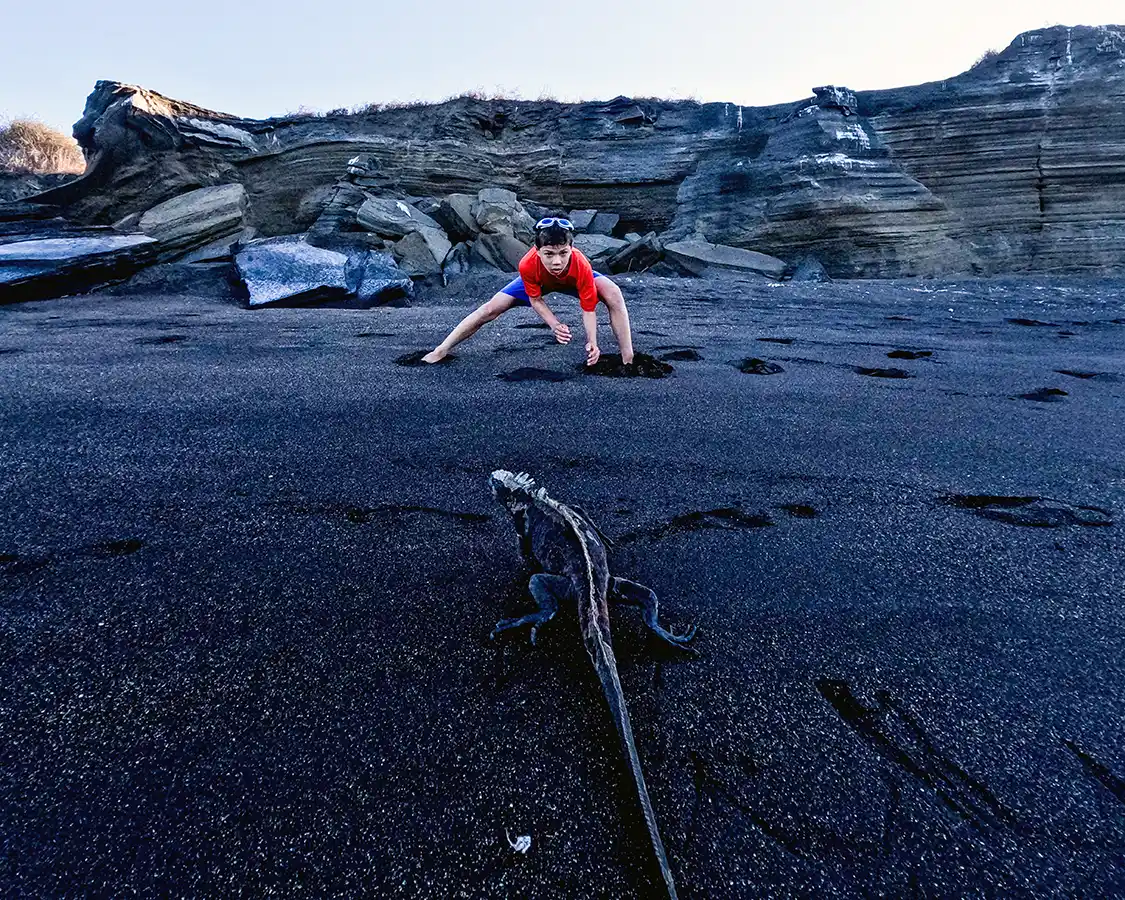
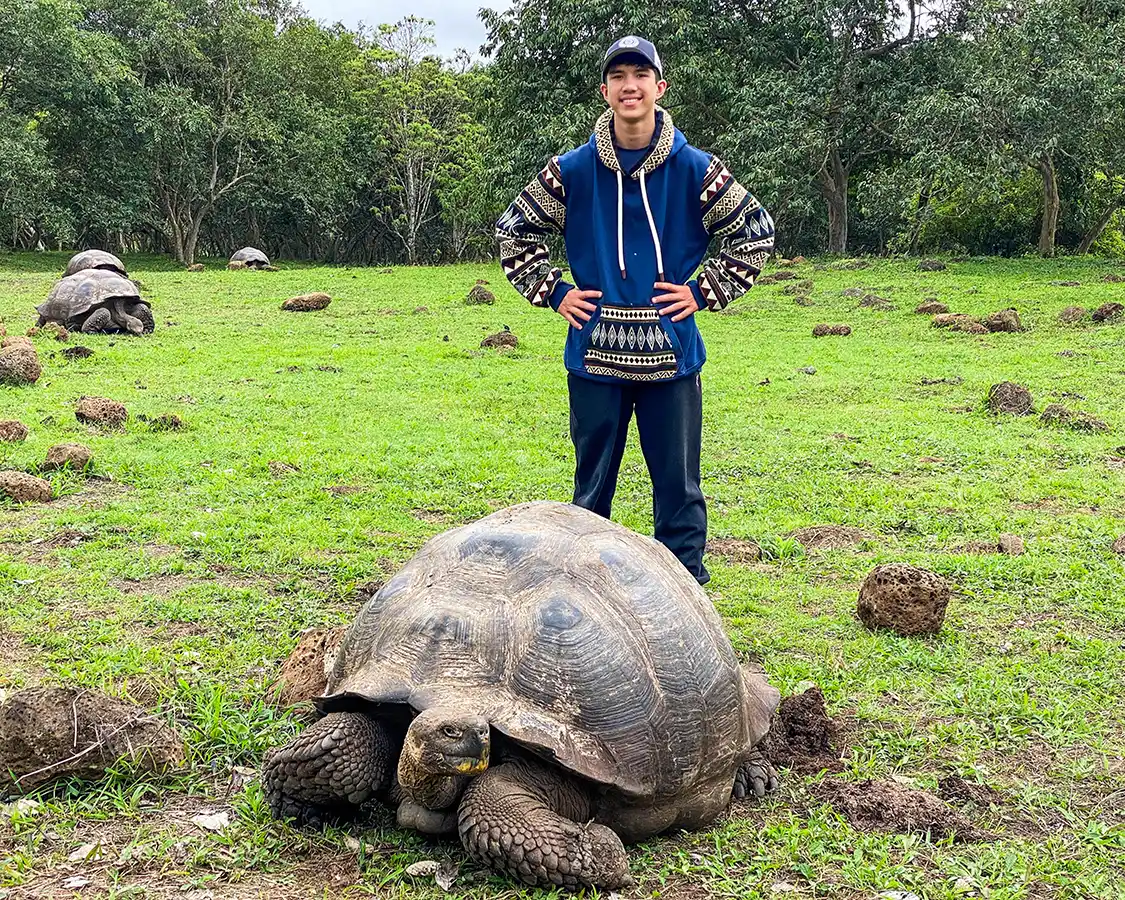
If you’ve ever wondered what it’s like to wander through a wildlife documentary, North Seymour Island is the place to start. The air is thick with frigatebirds puffing out their ridiculous red chests like teenagers trying too hard at the high school semi-formal. Blue-footed boobies waddle and dance, and iguanas — prehistoric, stone-colored dragons — pile on top of each other with no appreciation for personal space.
On South Plaza Island, sea lions ruled the beaches. Cohen tried to count how many we saw before giving up somewhere around “a lot.” The cliffs dropped dramatically into turquoise water, and as if the scenery wasn’t enough, an orca surfaced off the stern of our ship around sunset on our first evening, just in case the day hadn’t been epic enough already.
And then there were the giant tortoises of Santa Cruz. Climbing into the Highlands, past fields of guava and coffee, we found ourselves staring at these lumbering icons of the Galapagos. That morning, we had been stunned, learning that hundreds of these animals were massacred every day in the 17th and 18th centuries. That number seemed unbelievable until we saw fields of them lazily chewing grass.
Underwater Adventures
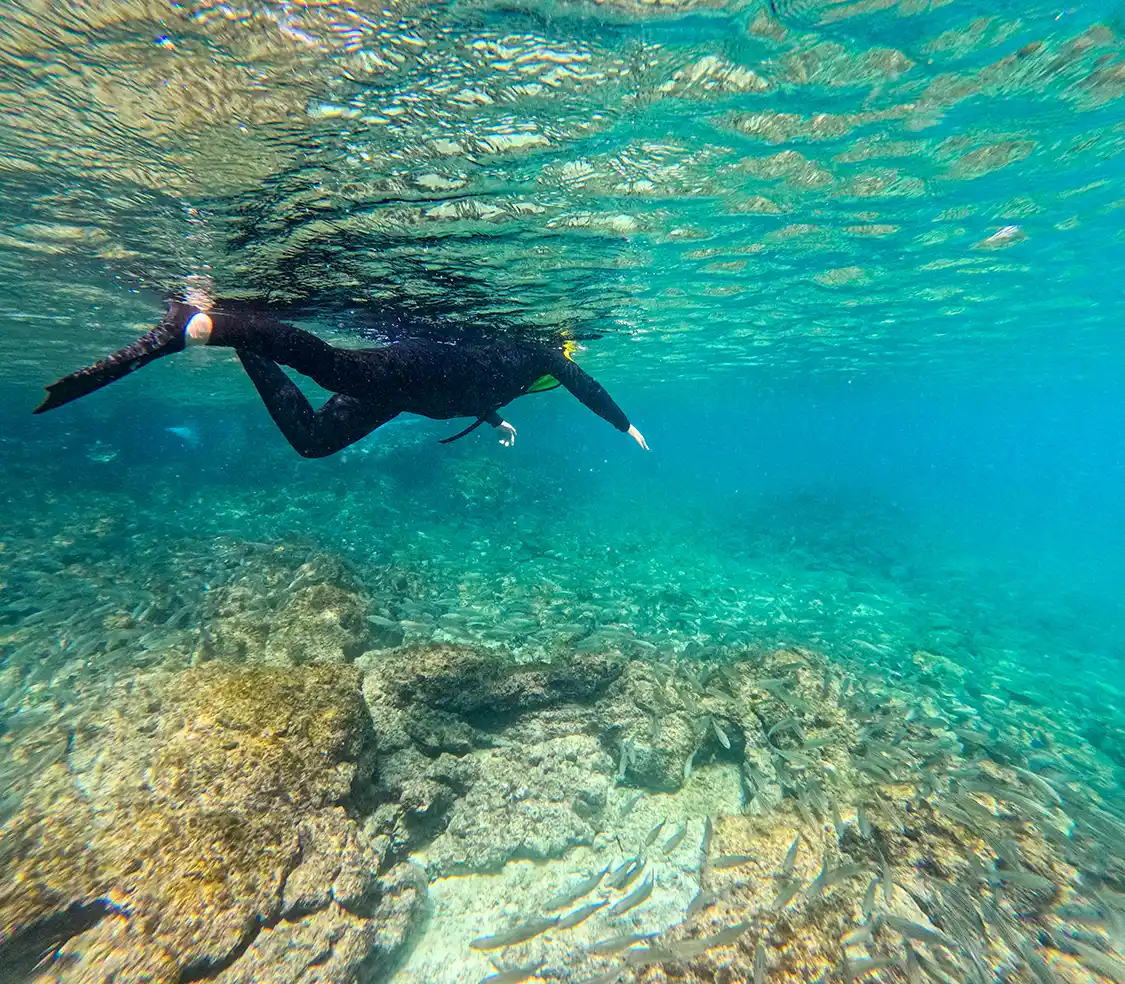
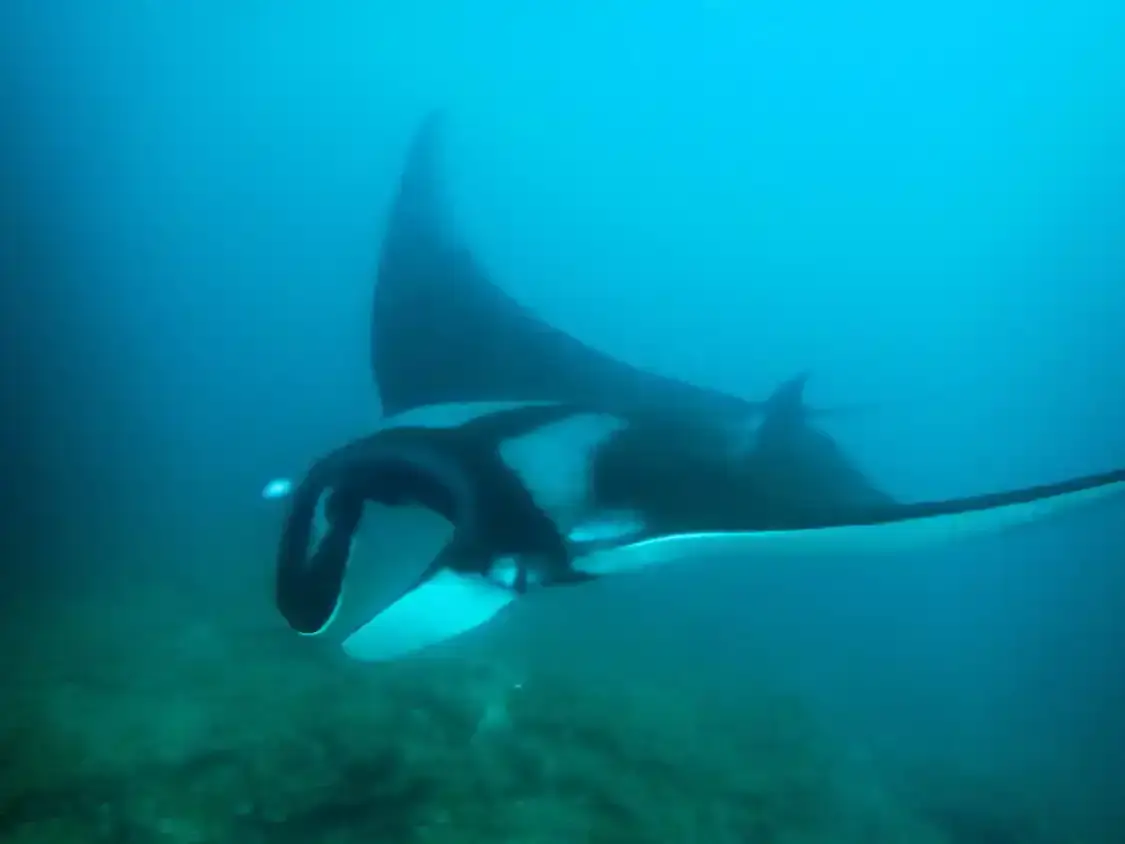
On land, the Galapagos is astonishing. But underwater? It’s transcendent.
On South Plaza Island, we slipped into the water and found ourselves in an alien world. Sharks glided below, sea turtles drifted past like zen masters, and sea lions rocketed around us in an underwater version of tag. The boys, who have been mastering snorkeling since our adventures in the Philippines, felt as if Christmas had come early.
On Rabida Island, the ocean delivered again. A manta ray — the size of our ribboat — drifted past us, wings flapping in slow motion. I caught Dylan’s wide-eyed stare through his mask, and for once, he was silent. That never happens.
Then there was Genovesa, the “bird island.” Above water, it’s a twitcher’s paradise. But beneath the surface, we swam with hammerhead sharks. It was one of those moments where every instinct screams “Nope!” but you do it anyway. Because that’s what adventure family travel is all about: teaching your kids (and reminding yourself) that fear and awe often come from the same place.
And yes, we saw penguins. On Bartholomew Island, Cohen’s patience finally paid off. Tiny Galapagos penguins zipped around us like aquatic Nerf darts, and he lost his mind with joy. Penguins have been his favorite animal his whole life. From his baby stuffed “meep meep” to penguin safaris in Punta Tombo, Argentina, and Paracas in Peru. “Bucket list,” he grinned when we climbed back on board, shivering and exhilarated.
Dramatic Landscapes
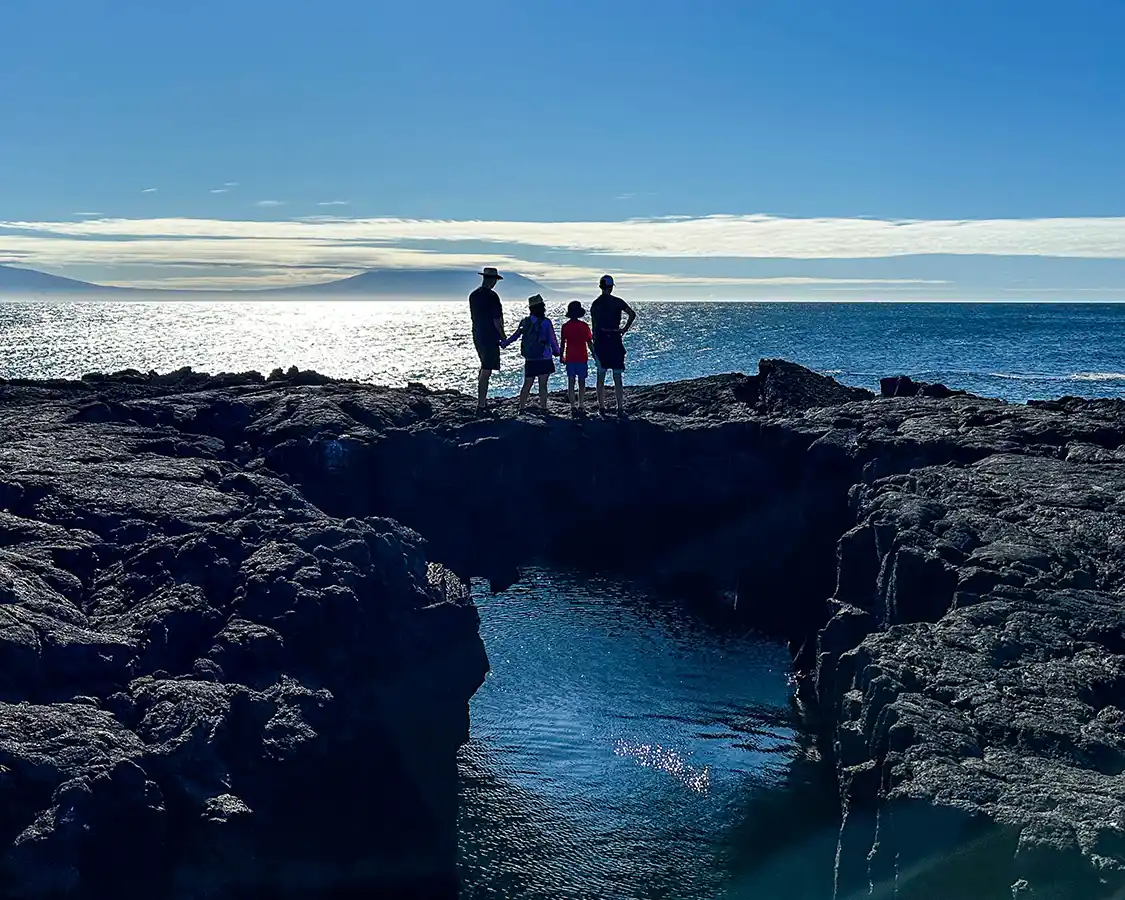
The Galapagos isn’t just about wildlife. The land itself feels alive.
On Santiago Island’s Sullivan Bay, we hiked across black lava flows that looked like they had cooled just yesterday. The boys pretended to hop from one ripple of rock to another, and I couldn’t shake the feeling we were trespassing on a freshly made planet.
Bartholomew’s Pinnacle Rock gave us the most famous view in the islands. After climbing the wooden staircase in the morning heat, we stood at the lookout, staring out over a panorama that looked like a desktop wallpaper from the 90s. Dolphins danced in the water below, just in case the view wasn’t cinematic enough.
And on Rabida Island, the beach glowed red in the sunrise. Flamingos waded in shallow lagoons while mockingbirds eyed us suspiciously from the brush. It was surreal, like we’d stumbled into someone’s art project.
Unforgettable Family Moments
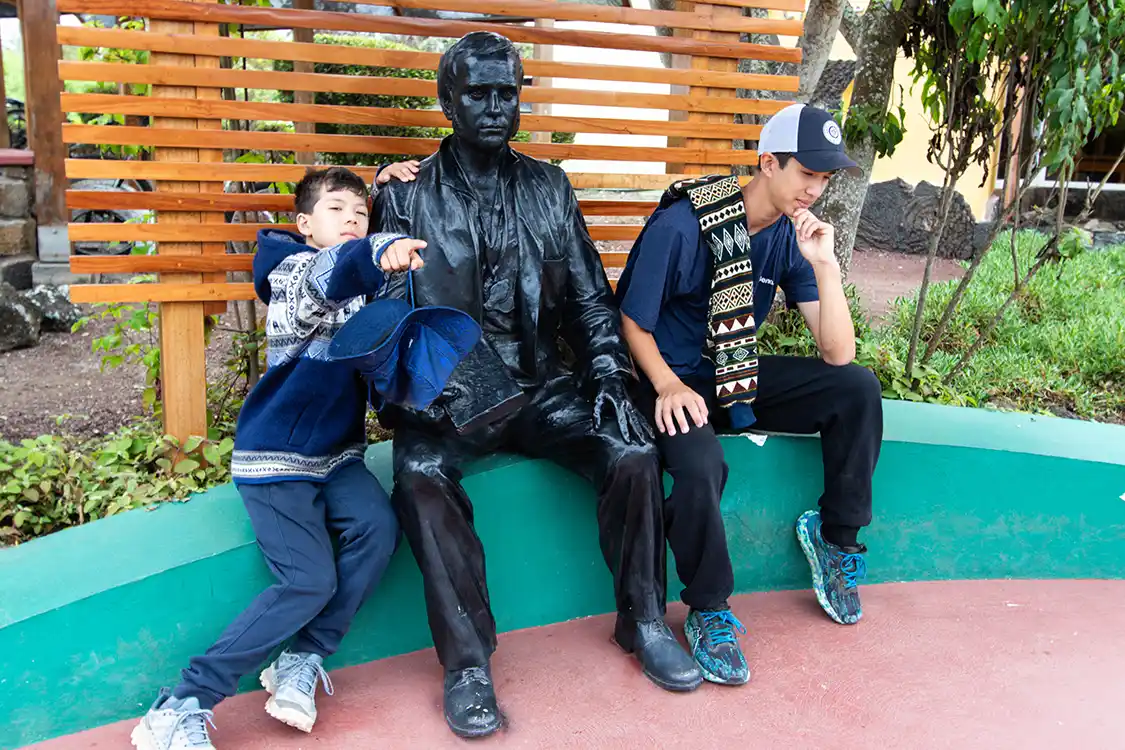
Of all the incredible wildlife encounters and jaw-dropping landscapes, what I’ll remember most are the little moments. Like Dylan declaring the ship’s hot tub his “office” after long hikes, soaking with a smug grin while sea spray misted the deck. Or Christina’s mother laughing at the absurdity of sea lions blocking our path to the water in San Cristobal. Or Christina, standing barefoot on the sand at sunset, quietly reminding me that we’d finally made it here — after decades of dreaming, saving, and planning.
And then there was Cohen’s face when he spotted that first penguin. Pure wonder, no filters. These are the things you can’t book through a tour operator. The kind of memories that stick long after the trip ends.
Practical Tips for Visiting the Galapagos With Kids
Dreaming about the Galapagos is one thing. Actually getting there — with kids, grandparents, and your sanity intact — is another. Here’s what we learned from our own family cruise through the Galapagos Islands.
Choosing the Right Cruise for Families
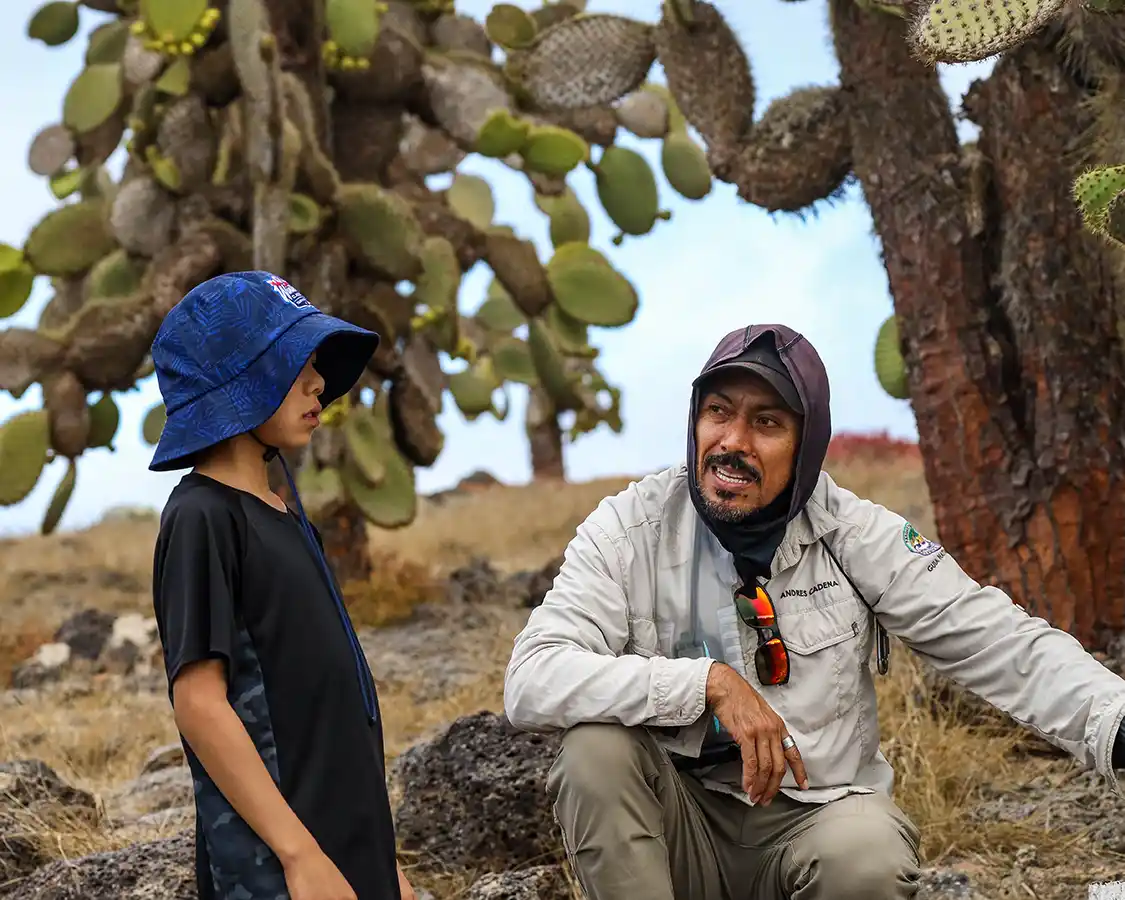
Here’s the deal: not all Galapagos cruises are created equal. Big ships mean crowds, buffets, and less time ashore. Small ships mean intimacy, more time with wildlife, and kids who know the crew by name by day two.
If you’re traveling with children, there are benefits to both. Larger ships often have more families and more social time for children. Go small and there’s privacy, easy access to the crew for education, and better food.
Our target was ships in the 16–20 passenger range, like our Royal Galapagos Natural Paradise. The pace is easier to manage, the guides can actually engage your kids, and you won’t feel like you’re herding them through an airport every time you disembark.
And don’t underestimate the value of good guides. The right naturalist can turn a curious child into a conservationist overnight. Our guide, Andres, was awesome. Packed with knowledge about the wildlife and landscapes of the Galapagos Islands, and passionate about preservation, and one of my favorite things, photography.
Seriously, check out his Instagram page! He even lent me his extra-long selfie stick so that I could get some cool shots of the Manta Ray near Rabida Island. I ended up buying one myself after I got home.
The Best Time to Visit the Galapagos Islands
The Galapagos is a year-round destination, but the experience changes with the seasons:
- Dry Season (June to November): Cooler water, nutrient-rich currents, better for spotting big marine life like whales and sharks. But you’ll want wetsuits for snorkeling.
- Wet Season (December to May): Warmer seas, calmer waters, lush landscapes. This is the sweet spot for snorkeling if you don’t enjoy cold water.
We visited during the warmer season, which meant we spent half the time underwater — and half the time trying to get Dylan out of it. Something that, at one point, we thought we’d never have to worry about. You can read about his struggles with open water here.
What to Pack (and What to Leave at Home)
Don’t overpack. You’ll be living in quick-dry shirts and swimsuits most of the time. Galapagos packing essentials include:
- Lightweight, breathable clothes (choose natural earth tones over bright colors. Bright clothes can startle the local wildlife).
- A good hat (sun in the Galapagos is merciless).
- Reef-safe sunscreen. (You can read about why this is important and find the best brands here)
- Sturdy walking shoes for lava hikes and a wet shoe or sturdy hiking sandal for wet landings.
- Motion sickness meds (don’t wait until you’re green to wish you had them)
- A decent waterproof camera or GoPro — because telling your friends you swam with penguins is less fun without proof
Leave the fancy clothes at home (unless you want to bring something special for dinner). No one cares if you wear the same t-shirt three days in a row. The iguanas certainly don’t.
Seasickness Is Real
I’ll be honest: the Galapagos is not kind to weak stomachs. Even on a relatively stable ship, there were nights on long journeys to remote islands, like Genovesa Island, when the ocean reminded us exactly where we were. If you or your kids are prone to motion sickness, come prepared.
Dramamine, Gravol, motion sickness bands — whatever works for you. And if you can, book cabins closer to the center of the ship, where the motion is gentler.
Pro tip: Ginger candies are a lifesaver. Cohen now swears by them, though he’s also convinced they cure jet lag and bad math grades.
Keeping the Kids Engaged While Cruising
Cruising the Galapagos Islands isn’t like traditional cruises. When we did a seven-day Celestyal cruise through the Aegean Sea, visiting Greece and Turkey, it was an entirely different experience. The Galapagos is an adventure classroom — use it.
Before you go, watch documentaries like Planet Earth with your kids. Read up on Darwin, sea lions, and penguins. Get them hyped. Onboard, encourage them to take photos, keep journals, or sketch what they see. Dylan’s photos of the animals were awesome and sparked a love of photography that followed him to our seven-day safari in Tanzania.
And don’t be afraid to let them get bored. Sometimes, the most magical things happen when kids stop asking “what’s next” and just watch a tortoise chew grass for ten minutes.
Respect the Rules (Seriously)
The Galapagos isn’t Disneyland. Access to the wildlife is so incredible because the animals don’t care about you, and that’s exactly how it should stay.
Follow your guides’ instructions. Stay on marked trails. Don’t touch the wildlife, no matter how close they may come. And teach your kids why those rules matter. The Galapagos Islands are fragile, and your behavior — good or bad — ripples further than you think.
If you want your kids to grow up respecting the planet, this is the place to start.
Budgeting for a Galapagos Family Cruise
Let’s not sugarcoat it: visiting the Galapagos is expensive. Flights, park fees, cruises, gear, gratuities — it adds up fast. But here’s the truth: it’s worth every penny.
If you’re already investing in a family adventure, don’t cut corners here. Choose a reputable operator, pay for a good itinerary, and remember that this isn’t just a vacation — it’s a once-in-a-lifetime educational adventure.
And if you’re looking to book, sites like Viator and Get Your Guide are a good place to start for Galapagos tours and pre and post-cruise activities.
Embrace the Unexpected
Itineraries in the Galapagos are more like suggestions than contracts. Weather shifts. Wildlife moves. A hike you’ve been dreaming about might get swapped for a snorkel you didn’t know you needed.
Roll with it. Some of our best memories came from moments that weren’t on the schedule. In the Galapagos, the unexpected is the point.
Why Sustainability Matters in the Galapagos
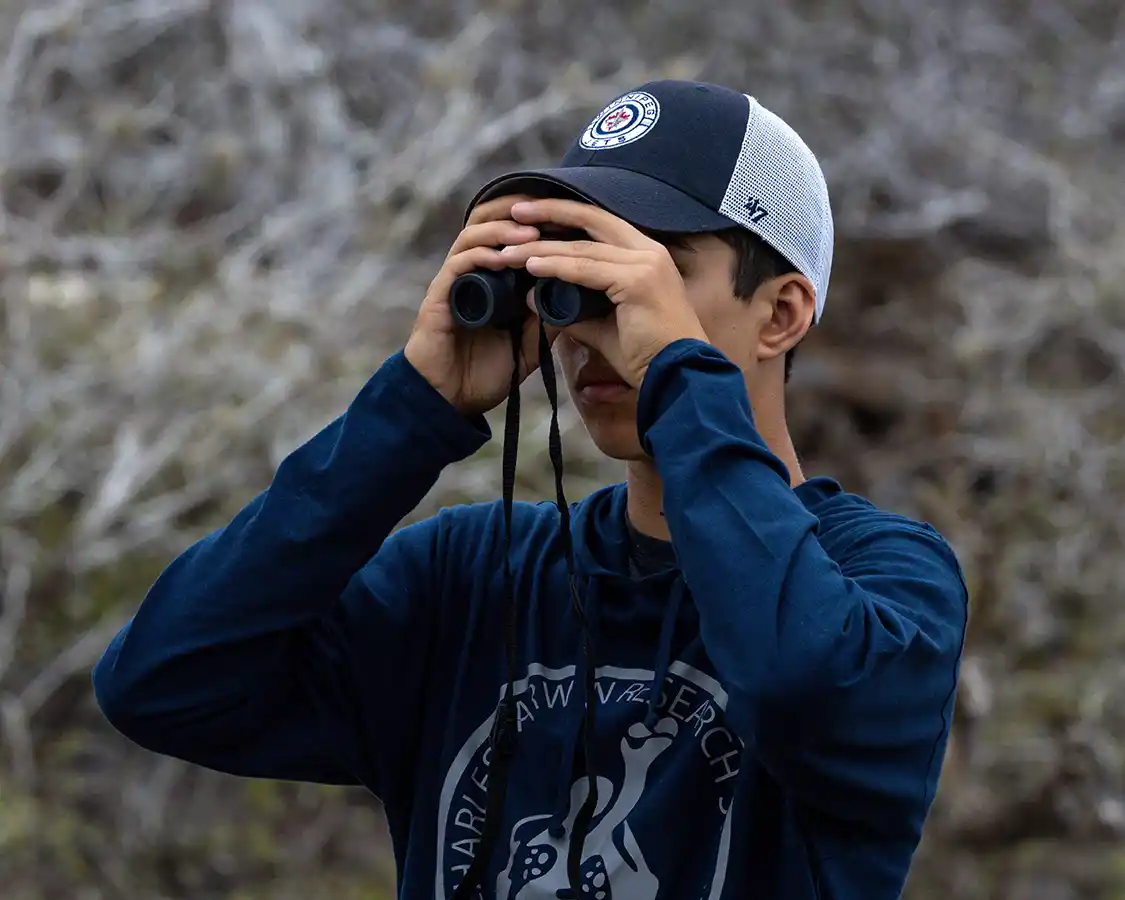
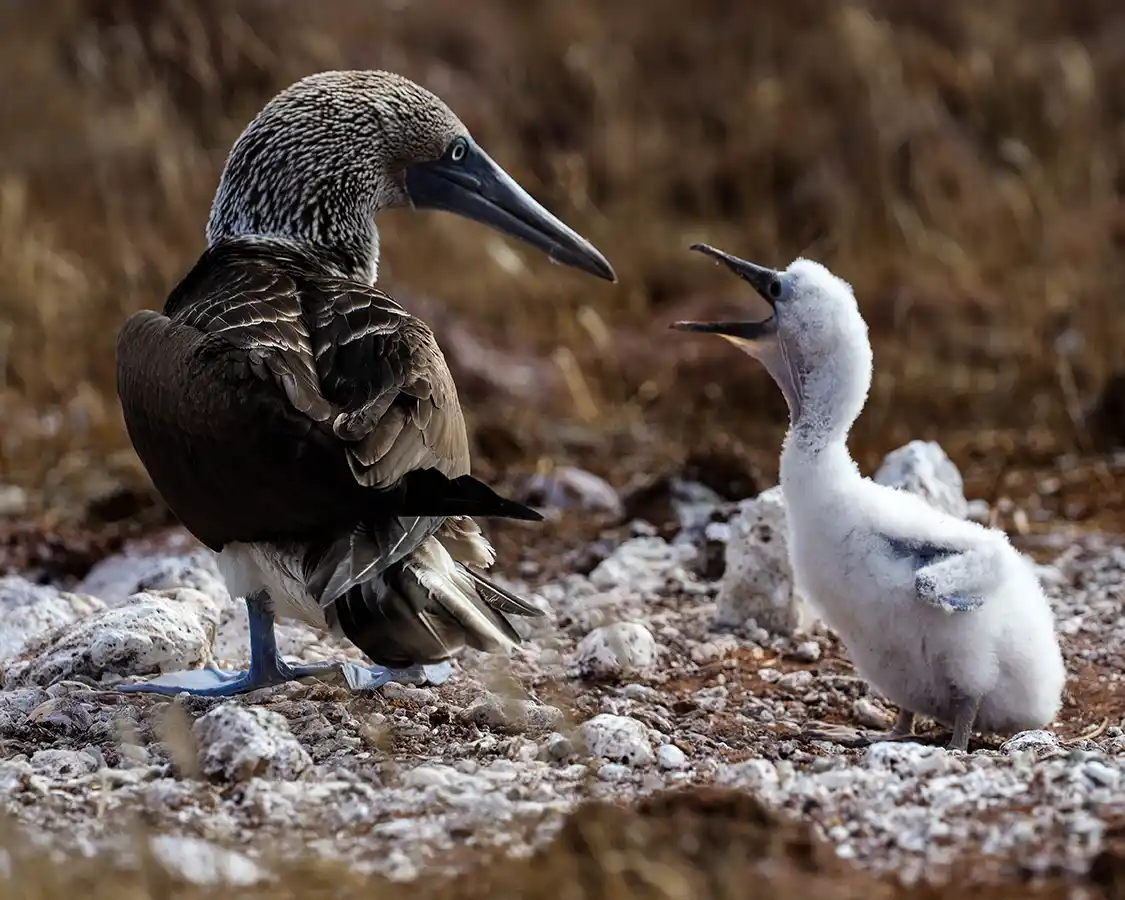
The Galapagos is far more than just another travel destination. It’s a clear example of what the world looked like before humans started reshaping it. And it only still exists in that state because people here fight every single day to protect it.
Strict visitor rules, licensed guides, and steep park fees might feel like inconveniences when you’re planning, but on the ground, they’re what keep the islands wild. Every time you rinse off your shoes before boarding the ship or stick to a marked trail instead of wandering into the brush, you’re part of that effort.
We saw this first-hand at the Charles Darwin Research Station on Santa Cruz Island. Here, giant tortoises are bred and reintroduced into the wild — a fight to undo centuries of damage caused by whalers, pirates, and settlers. The boys got to see the remains of Lonesome George, the last Pinta Island tortoise, preserved as a stark reminder of what happens when conservation comes too late. It was sobering, but necessary.
For families, these moments are more than educational. They’re lessons in humility. It’s one thing to tell your kids that animals are endangered. It’s another for them to look into the eyes of a creature that almost didn’t make it — and realize their choices matter.
Final Reflections: A Childhood Dream Made Real
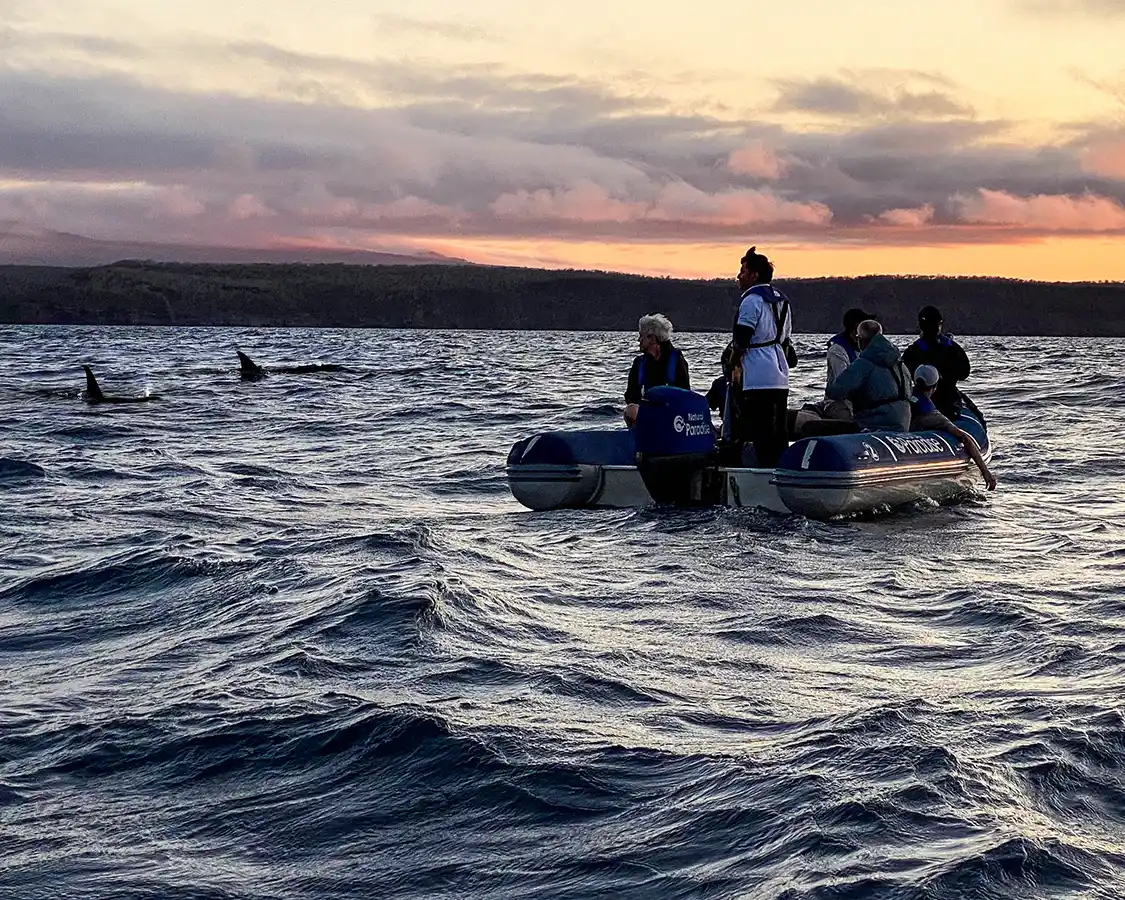
When I was a kid, the Galapagos felt like a fairy tale stitched together from inside the pages of National Geographic. Now, decades later, I’ve stood on its beaches, swum in its waters, and hiked its lava flows. But more importantly, I’ve done it with my wife, my children, and my mother-in-law by my side.
The Galapagos didn’t just live up to the dream. It rewrote it.
I watched my sons learn that bravery sometimes means slipping into cold, shark-filled water with your heart in your throat — and discovering wonder waiting in the waters. I saw my mother-in-law laugh at sea lions and marvel at tortoises that have lived longer than some countries. And Christina and I? We remembered why we travel the way we do: not for resorts or comfort, but for those rare, humbling experiences that change the way you see the world.
The Galapagos Islands is not easy travel. It demands planning, patience, and a willingness to step outside your comfort zone. But in return, it offers something far rarer than a vacation: perspective.
For families who can make it here, know this — the Galapagos will give you more than you expect. More awe, more adventure, more questions than answers. And if you’re lucky, it will remind you, as it did me, that even the wildest dreams can come true.
Family-Friendly Galapagos Islands Tours
🐢 Plan Your Own Galapagos Adventure
Ready to experience the magic of the Galapagos Islands? These hand-picked tours from Viator and GetYourGuide make it easy to explore wildlife, landscapes, and culture with your family.
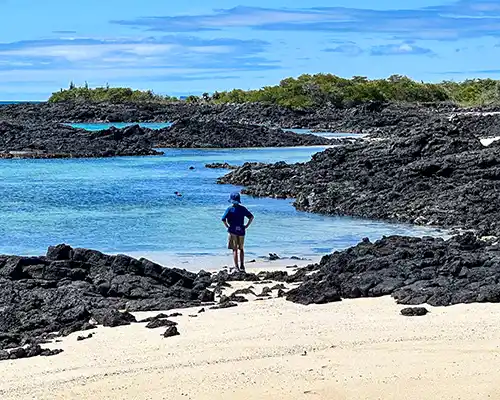
🚢 7-Day Galapagos Cruise: Western Loop
Sail through the Galapagos Islands on a small-ship adventure. See giant tortoises, blue-footed boobies, and snorkel with sea lions.
Book on GetYourGuide →
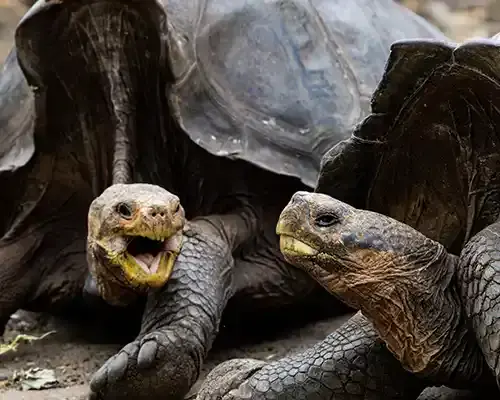
🌊 Santa Cruz Island & Tortuga Bay Tour
Discover giant tortoises in the wild and relax on Tortuga Bay’s pristine beaches. Perfect day trip for families with kids.
Book on Get Your Guide →
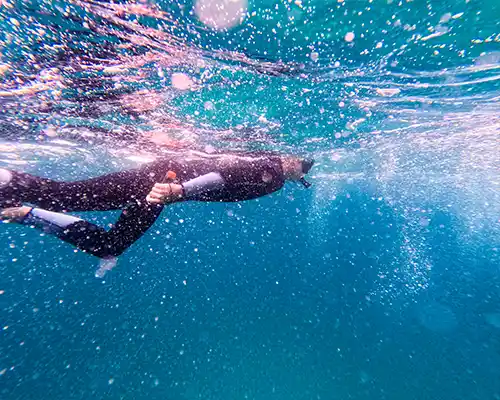
🤿 Snorkeling at Kicker Rock
Swim with sharks, sea turtles, and rays around one of the Galapagos’ most iconic landmarks on this unforgettable family tour.
Book on Viator →
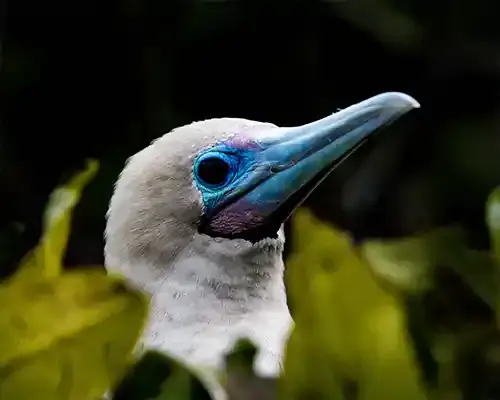
🦅 Genovesa Island Birdwatching Tour
Explore the remote bird island of Genovesa. Spot red-footed boobies, frigatebirds, and owls on this full-day guided excursion.
Book on Viator →
*These are affiliate links. We may earn a small commission at no extra cost to you — thank you for helping us keep our adventures going!*
Family-Friendly Hotels In The Galapagos Islands
If you’ve opted for a land-based Galapagos Islands adventure, or if you’d like to tack a couple of days onto the beginning or end of your Galapagos family cruise, you’re going to need a place to stay. The islands with a tourism infrastructure are limited to Santa Cruz and Isabella Island. I’ve mapped out some great family-friendly hotels that would make great options for adventurous families.
🏨 Top Family-Friendly Hotels in the Galápagos
Looking for the perfect base for your family adventure in the Galápagos? These hand-picked hotels on Santa Cruz and Isabela combine comfort, character, and kid-friendly amenities.
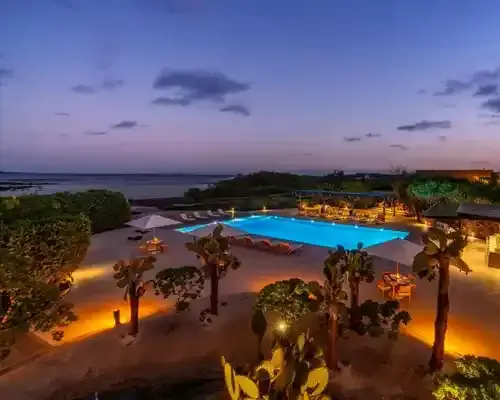
🌿 Finch Bay Eco Hotel (Santa Cruz)
Puerto Ayora’s iconic eco-friendly lodge. Family rooms, pool, and direct beach access — sustainability meets comfort.
Check Availability on Booking.com →
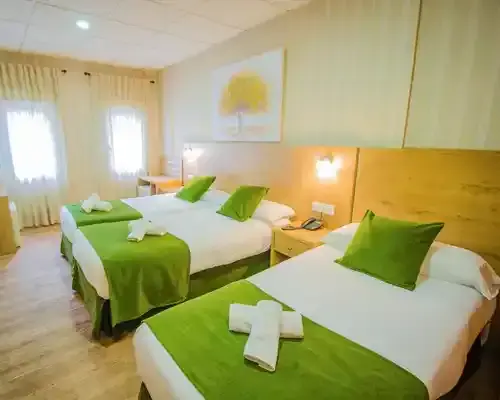
🐠 Hotel Solymar (Santa Cruz)
Central Puerto Ayora location with poolside sea lions and spacious family suites. Walkable to shops and the Darwin Center.
Check Availability on Booking.com →
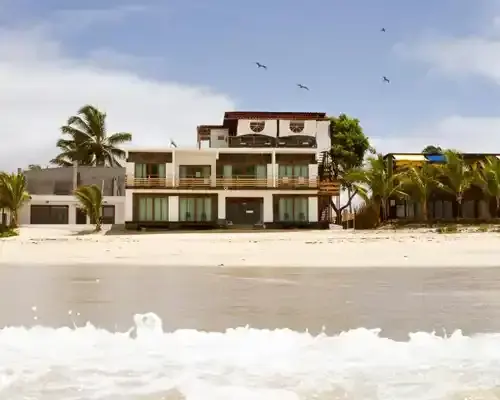
Cormorant Beach House (Isabela)
Beachfront boutique on Isabela Island with family suites, infinity pool, and views of marine iguanas crossing the sand.
Check Availability on Booking.com →
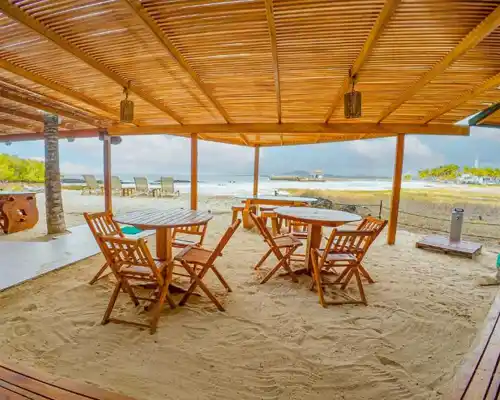
🌴 La Casa de Marita (Isabela)
Charming boutique hotel with ocean-view balconies, garden suites, and family-sized rooms in Puerto Villamil.
Check Availability on Booking.com →
*These are affiliate links. We may earn a small commission at no extra cost to you — thank you for supporting our adventures!*
Ready to Plan Your Own Family Adventure?
If you’re considering a Galapagos family cruise, don’t wait decades like I did. Whether it’s a one-week Western Loop itinerary or a shorter cruise paired with Ecuador’s mainland gems like Quito, Otavalo, Cotopaxi National Park, or Quilotoa, it will change the way your family sees the world. Hey, maybe you’ll be like us and experience two wonders in one trip, like when we traveled from the Galapagos Islands into the heart of the Amazon Rainforest.
Check out tours and cruises on Viator or Get Your Guide to start planning your own adventure. And if you want a closer look, don’t miss our family travel video from the Galapagos Islands. If you’re looking for more inspiration, you can also check out my favorite photos from our time in the Galapagos here.
Because sometimes, all it takes is one trip to remind you how wide — and how wild — this world really is.
You May Also Like To Read:

